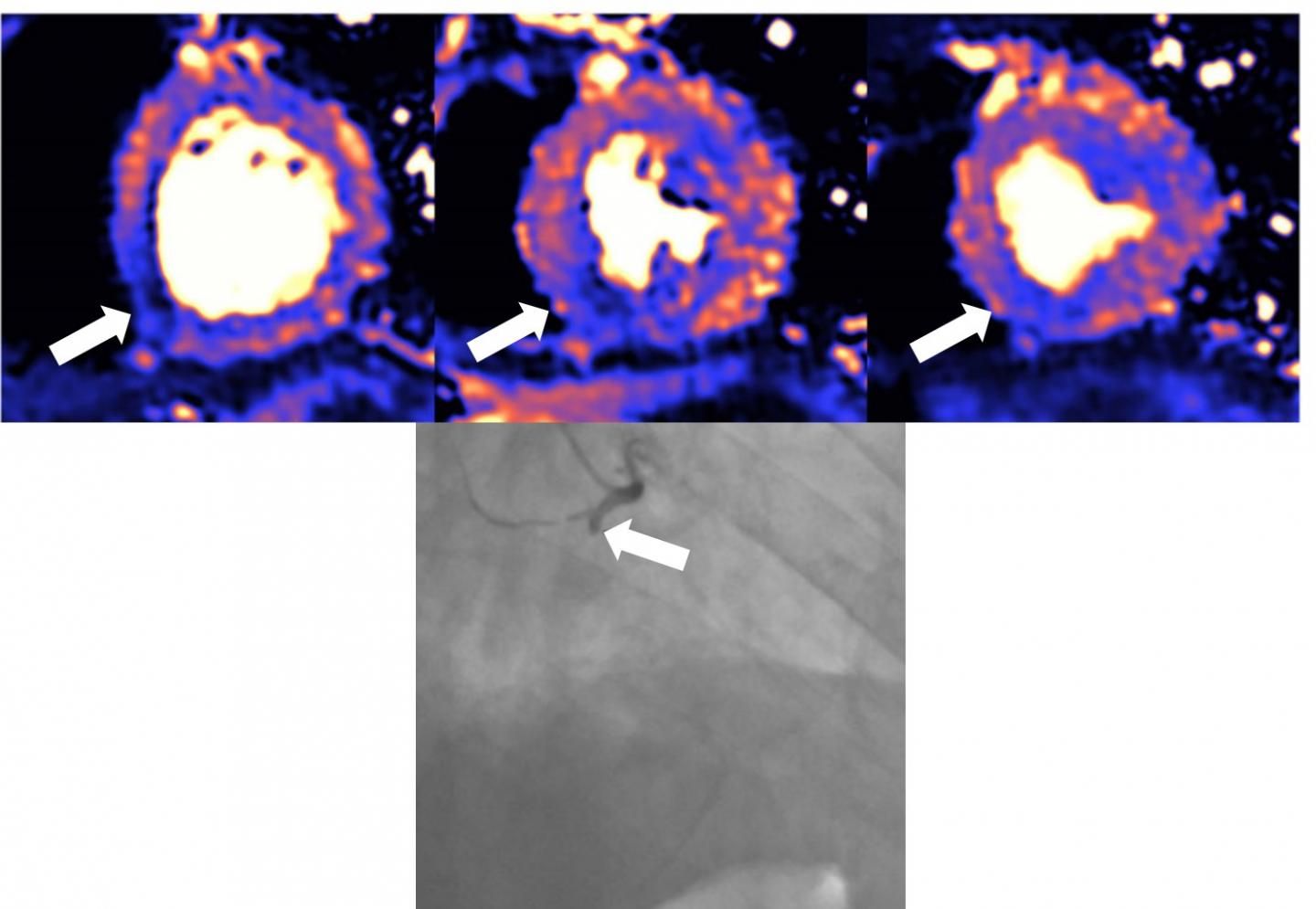MRI Shows Heart Damage in Nearly Half of Patients with Severe COVID-19
MRI scans reveal myocarditis, scarring, infarction, and ischemia in recovered patients with elevated troponin levels.
Roughly 50 percent of patients who recover after being hospitalized with severe COVID-19 suffer heart damage. MRI scans, conducted at least one month post-discharge, show patients who have elevated levels of troponin show evidence of heart injury.
The amount of troponin, a protein that is released into the bloodstream when the heart muscle is injured, typically rises when arteries are blocked or when the heart is inflamed. The damage seen in COVID-19 patients includes myocarditis, muscle scarring or infarction, ischemia, or a combination of all three, said researchers in a study published Fed. 17 in European Heart Journal.
The findings pointing to heart damage from this study contribute to results in recent months about the presence of myocarditis in athletes, adding to the understanding of how COVID-19 affects heart function.
Related Content: Cardiac MRI Shows Less Myocarditis in Athletes Post-COVID-19 Than Previously Reported
“Raised troponin levels are associated with worse outcomes in COVID-19 patients,” said lead researcher Marianna Fontana, cardiology professor at University College London. “Patients with severe COVID-19 disease often have pre-existing heart-related health problems, including diabetes, raised blood pressure, and obesity. During severe COVID-19 infection, however, the heart may also be directly affected.”
MRI scan of damaged heart. Blue means reduced blood flow, orange is good blood flow. In this figure the inferior part of the heart shows dark blue, so the myocardial blood flow is very reduced and the black and white angiography, which looks directly at the blood vessels, shows that the vessel which supplies the blood to this part of the heart is occluded. The 3 colored images are 3 different slices of the heart: the basal the mid and the apical slice.
CREDIT
European Heart Journal

Knowing exactly how the heart is damaged by the virus is difficult. With heart MRI scans, though, providers can see different injury patterns that allow for more accurate diagnoses and the development of more targeted treatments, she continued.
Based on clinical observations, patients who are hospitalized with severe COVID-19 do have elevated troponin levels during the critical phase of their illness, indicating that the body has initiated an intense immune response. To learn more, Fontana’s team examined 148 COVID-19 patients who were discharged up until June 2020 from six acute hospitals throughout London. All included patients had elevated troponin levels and underwent MRI scans after being discharged. The team compared patient results to those of a control group who had not contracted COVID-19, as well as a group of 40 healthy volunteers.
“We found evidence of high rates of heart muscle injury that could be seen on the scans a month or two after discharge,” she said. “Whilst some of this may have been pre-existing, MRI scanning shows that some were new, and likely caused by COVID-19.”
According to the team’s evaluation, functionality of the left ventricle – the chamber that pumps oxygenated blood to every part of the body – was normal in 89 percent of COVID-19-affected patients, but 80 patients (54 percent) did have scarring or heart muscle injury. Inflammation was responsible for tissue scarring or injury patterns in 39 patients (26 percent), and, ischemic heart disease, including infarction or ischemia, was responsible in 32 patients (22 percent). Both causes were present in nine patients (6 percent), and 12 patients (8 percent) had ongoing heart inflammation.
“Importantly, the pattern of damage to the heart was variable, suggesting that the heart is at risk of different types of injury,” she explained. “While we detected only a small amount of ongoing injury, we saw injury to the heart that was present even when the heart’s pumping function was not impaired and might not have been picked up by other techniques.”
There are concerns that injury in patients who had the most severe cases can increase the risk for heart failure in the future, she noted. But, more investigation is required.
Ultimately, the team said, these findings present two opportunities for improving patient care and outcomes. Knowing more about the patterns of injury can help providers find ways to side-step injury before it even occurs, such as implementing treatments for blood clots that might be present. In addition, being able to pick up on the effects of these injuries during convalescence could help providers identify which patients might benefit from specific heart-protective drugs.
It is important to note, Fontana said, while this work indicates potential methods for identifying low- and high-risk patients and points to potential ways to improve outcomes, their investigation focused only on patients with elevated troponin levels who had been hospitalized.
In addition to the journal publication, Fontana and colleagues will present their results at the Society for Cardiovascular Magnetic Resonance annual meeting on Feb. 19.
For more coverage based on industry expert insights and research, subscribe to the Diagnostic Imaging e-Newsletter here.
MRI Study at ARRS Raises Questions About Disparities in Detection of MASLD
May 3rd 2025New research revealed that Hispanic Americans with evidence of hepatic steatosis on MRI but no formal diagnosis of MASLD had over a fourfold higher risk of developing hepatocellular carcinoma in comparison to those who had a formal diagnosis of MASLD.